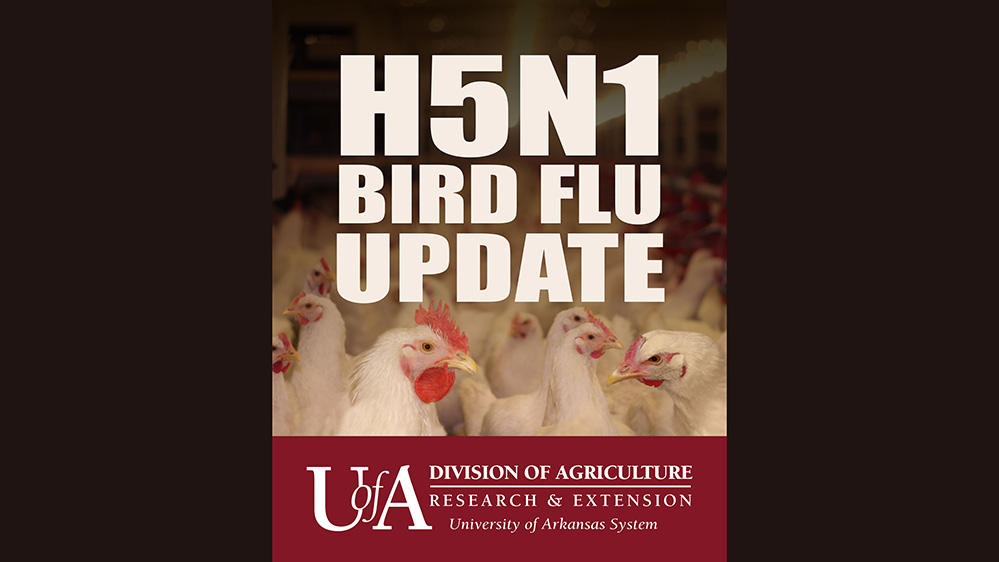LITTLE ROCK — Anglers turning the pages of the newly revised 2025 Arkansas Fishing Guidebook, which is arriving at local sporting goods stores this week, will notice a few changes to regulations on the “New This Year†section in the front.
Most changes to the Arkansas Game and Fish Commission’s fishing regulations were minor modifications to make the rules more consistent across the state, but a few tweaks are meant to offer new opportunities for Arkansas anglers.
New Limits for Largemouth
A new regulation replaces slot limits on Brewer and Barnett lakes, which previously required anglers to pitch back any largemouth bass from 13- to 16-inches long. Now anglers can keep up to 10 largemouth, but only one of those may exceed 16 inches.
Sean Lusk, fisheries district coordinator for the Arkansas Game and Fish Commission, says the change is needed to promote a little more “catch-and-keep†angling.
“Bass fishing has become primarily a catch-and-release sport in many parts of the state,†Lusk said. “Creel surveys on some popular tournament fisheries indicate as little as 5 percent of the fish caught are being kept. In situations like this, slot limits have shown to be ineffective.â€
For slot limits to work as intended, anglers must harvest fish both above and below the protected size range to free up food resources so the fish within the slot continue to grow.
“We’ve seen that bass anglers on these two lakes simply don’t keep enough of the fish that are below the slot,†Lusk said. “This causes growth rates to slow because the lake has too many mouths to feed. Fish reach that protected size and then stack up instead of continuing to grow out of the slot.â€
Biologists hope to change the pressure on the fishery by increasing harvest. Allowing 10 fish per day may entice more harvest-oriented anglers, but allowing only one fish longer than 16 inches to be kept still protects the larger fish from overharvest.
“Oklahoma has used a similar regulation in a few of their lakes facing the same situation and has seen some positive results in the last few years,†Lusk said.
Barnett and Brewer are both high on the list of local bass clubs, and some tournament directors have asked how the new limit will affect them. Many tournament anglers would lose interest in these lakes if they can only weigh one fish over 16 inches.
“As long as bass tournament anglers release all the fish after the weigh-in, tournament directors will be able to apply for a waiver to this new regulation through the Black Bass Program at blackbassprogram@agfc.ar.gov,” Jeremy Risley, Black Bass Program Coordinator for the AGFC, said. “We’ll need some additional post-tournament reporting from them to maintain the ability to give these waivers in the future, but this will be a great way for tournament anglers to work with the AGFC on future management on these lakes.”
One lake that will see an additional length limit on largemouth bass is Cane Creek Lake in Lincoln County. Beginning this year, largemouth bass must be 15 inches long to keep at this 1,700-acre south Arkansas fishery.
“Cane Creek is one of our lakes where creel surveys indicate anglers are a little more harvest-oriented,†Vic DiCenzo, assistant chief of fisheries for the AGFC, said. “Reports from the regional supervisor from the last few years’ population surveys showed low to moderate recruitment and a need to protect fish from harvest until they reached 15 inches to ensure they had at least one year of spawning activity before they were removed from the lake. This minimum length limit should satisfy that data-driven recommendation.â€
Poinsett Prepped and Ready
This year marks the first year anglers can keep crappie and bass at Lake Poinsett since its renovation was completed in 2020. In addition to the same regulation of 10 fish with only one longer than 16 inches that is placed on Barnett and Brewer, Lake Poinsett has a special daily limit of 15 crappie per angler this year to start the harvest.
Allison Asher, AGFC fisheries management biologist in Jonesboro, said the lake has responded well to stockings of baitfish and predator fish since its renovation.
“The gates were closed in December 2020, and we were able to stock threadfin shad, golden shiners, fathead minnows, bluegill and redear sunfish in 2021,†Asher said. “Catchable-sized channel catfish were stocked that first year to give anglers an immediate target to catch and enjoy.â€
Asher says the stepped approach being used on crappie limits was applied with good success on the lake’s bream populations.
“We opened the harvest of bream with half the daily limit in 2022, then moved it to the standard statewide limit in 2023 once our surveys indicated the fishery could handle the pressure,†Asher said. “In our last samples, the bream population has been outstanding. The larger bluegills are nearing the 8- to 10-inch size range, and some redear sunfish are touching the 11-inch mark.â€
Asher said anglers are excited about the opportunity to keep some crappie at Poinsett again, and noted full parking lots on the first few days of the year already.
“They were parked along the road one morning, and I spoke to one pair of anglers who caught their limit in less than an hour,†Asher said. “There were plenty of 10- to 11-inch crappie caught, and all of them were very healthy.â€
Record-class Paddlefish Draw
If you ask DiCenzo which new opportunity for 2025 is the most exciting, he will tell you that it’s the establishment of a snagging season and drawn permit system for the Beaver Lake paddlefish population.
“We really didn’t hear a lot from the public when we proposed this regulation, but it is going to be a big deal,†DiCenzo said. “I wouldn’t be surprised if we have multiple paddlefish caught this year that top the century mark and one or two might even challenge the state record.â€
DiCenzo explained that the new regulation will make it legal to snag paddlefish from a boat or the bank from the Arkansas Highway 45 bridge upstream to Lake Sequoyah Dam from April 15-June 15 if a person wins a paddlefish-snagging permit during the open application period (March 1-30). This will target those massive Beaver Lake paddlefish that have made headlines the last few years as they move upstream for their spawning run.
“They don’t reproduce successfully in Beaver Lake,†DiCenzo said. “Instead, these are all fish that were stocked from 1990 to 2000 and are at the end of their lifespan.â€
The fish were stocked to ensure a source of broodstock in case local rivers saw a decline during increased commercial fishing pressure, but they were never called upon.
“Those fish are over 30 years old, and are likely going to begin fading away, but we want to offer this opportunity for anglers to have a shot at what is truly a once-in-a-lifetime catch before they’re gone,†DiCenzo said. “These fish are responsible for the current state record of 127 pounds, 6 ounces and the current world record spearfishing catch of 90 pounds, 12 ounces. There was even one fish that was found last year that was hit by a boat propeller that was over 6 feet long and weighed 165 pounds, which would have taken the world record.â€
A new paddlefish season will also take place April 15-June 15 below Beaver Lake, from the Houseman Access on the White River to the Missouri state line. Although this area won’t likely hold the trophy-class fish that the upper portion of Beaver Lake holds, it does have some nice paddlefish from stockings done by the Missouri Department of Conservation. This area will follow the same 34-inch minimum eye-to-fork length limit MDC uses to regulate this fishery.
Not-so-commercial Fishing
Lusk says two changes to AGFC regulations will address some alternative methods of fishing that fell within gray areas of commercial harvest.
“The first is a regulation change that came from public comments during our regs-setting process, and it clarifies some issues with hogging and noodling,†Lusk said. “Now, instead of arbitrary lines dividing the state into different seasons, we’ll have one regulation that states any water open to commercial fishing will be open to hogging or noodling May 15-Oct. 31.
Hogging, sometimes called grabbling or hand-grabbing, is the act of reaching under the water into sunken boxes or cavities and grabbing catfish by hand. Noodling is when the angler reaches into the same sort of cavity but uses a handheld hook or gaff to pull the fish free.
“The season was opened at different times to protect those large spawning catfish from overharvest, but there was some inconsistency with the timing of spawn and the lines being used,†Lusk said. “Now, if it’s open to commercial harvest, then it should be able to withstand this limited harvest as well.â€
The second not-so-commercial angling opportunity is the establishment of a new recreational netting permit for people who use slat traps and nets but only fish for personal consumption.
The Recreational Netting Permit will be needed in addition to a valid resident fishing license by anyone who is operating up to five legally sized hoop nets or slat traps (where legal) or running up to 100 yards of trammel or gill nets to catch fish for personal consumption. Holders of this new $25 permit may harvest three daily limits of catfish and an unlimited number of rough fish from any waters open to commercial fishing for personal use. These fish cannot be sold. Traps and nets must be labeled with the operator’s name and address, customer identification number, drivers license number, or vehicle license plate number.
“We heard from many anglers who operated under a commercial fishing permit who were only interested in catching fish for personal consumption, family get-togethers and other gatherings,†Lusk said. “They’re removing only rough fish and catfish, but they aren’t doing it for a profit, so we worked to give them an opportunity to continue this tradition without the steep price tag.â€
The following regulations changes also went into effect Jan. 1, 2025:
- Statewide game fish regulations are restored on Mercer Bayou.
- The Crooked Creek smallmouth bass special regulation has been removed, with the exception of the Catch-and-Release area along AGFC property near Kelley’s Slab.
- Resident and nonresident guides (both hunting and fishing) are required to carry proof of $100,000 general liability insurance.
- Resident fishing guide licenses have increased to $250.
- Commercial fishing permits have increased to $300. Helpers permits have increased to $50.
- Harvest of any trout other than rainbow trout is prohibited on the Beaver, Bull Shoals, Norfork and Greers Ferry tailwaters and the Spring River from 30 minutes after sunset to 30 minutes before sunrise.
- All limblines, yo-yos or other mechanical fishing devices must be run every 24 hours and must be removed when no longer in use for fishing (not baited for 24 hours or more).
- Anglers may fish no more than 2 hooks per limbline, free floating, yo-yo or other mechanical fishing device.
- Removed the “half the game fish daily limit, or the lesser number nearest half†while spearfishing.
- American eel has been added to the list of sport fish with a creel limit of 2.
- Mattocks Park Pond, Lake Village Community Pond, Mom’s Lake, Monticello High School Pond, and Mike and Janet Huckabee Youth Fishing Pond are now included in the Community Fishing Program water restrictions instead of the Family Fishing Program water restrictions.





